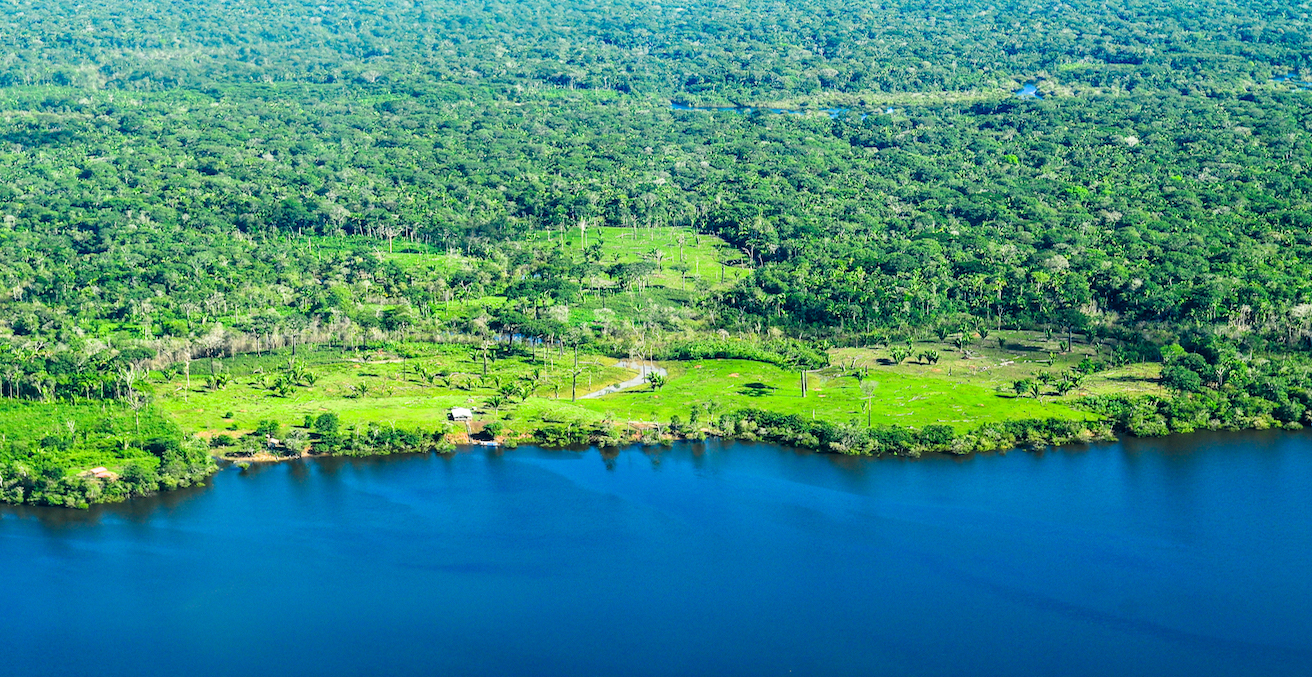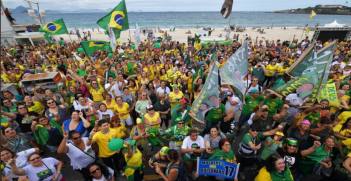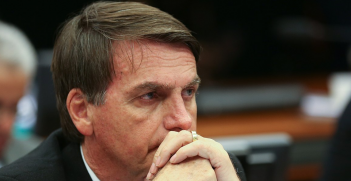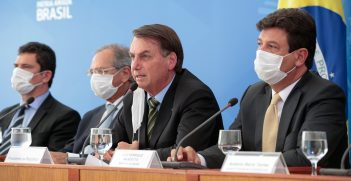How the World Bank Facilitates Burning in the Amazon

The World Bank is again in the spotlight for financing environmentally destructive infrastructure projects in Brazil.
The Amazon is burning. It reached its peak during the burning season in August 2019 with over 30,000 small fires during the G7 meeting in Biarritz France. As with other tropical forests, some of the burning is controlled legal burning by farmers to clear land for agricultural products such as soy, corn, and beef; but much of it is illegal and uncontrollable land clearing. Rebuked by French President Emmanuel Macron, the Brazilian President Bolsonaro was offered a package of $22.2 million to fight the fires by the G7, which was mockingly rebuffed. Bolsonaro later accepted $12 million from the UK.
What’s at stake? Two major concerns: that the Amazon comprises half of the world’s remaining rainforest and more than half of its species. It is recognised as the Earth’s lungs, sucking in CO2 emissions while providing oxygen. 17 percent of the world’s CO2 is trapped in the Amazon in vegetation; burning it will release that into the atmosphere. The 2018 IPCC assessment warns that CO2 emissions must dramatically decrease by 40 percent by 2030 from 2010 levels to achieve 1.5 degree warming with little or no overshoot.
Second, the fact that the Amazon is annually alight implicates the drivers of the destruction: not just agribusiness and corporations whose practices fuel the burning, and consumers whose appetite for soy, corn, and beef is unrelenting, but also the financiers of land clearing for development and economic growth. This has focused attention yet again on the role of the World Bank Group, which uses public money to fund international development projects in developing countries to further their economic growth. In 2018, the World Bank Group committed loans, investments, and issued risk coverage amounting to $45 billion.
We’ve been here before. In 1982, the World Bank financed the Polonoroeste Project that aimed to open up the Amazon forest for farming, cattle ranching, and settlement through a road-building and colonisation program in northwestern Brazil. The Polonoroeste project would come to epitomise the worst aspects of World Bank lending. The project pushed local inhabitants off their traditional land, severing their sustainable livelihoods. The forest was opened to unsustainable logging, ranching and farming methods on unsuitable soil. It created opportunities for pork-barrel corrupt political processes that contributed to stripping the land. It also led to rapid deforestation at then unprecedented levels; widespread malaria; the encroachment of colonists onto protected reserves; and mercury pollution from gold mining into the rivers. In 1988 of one of the principal activists, Francisco “Chico” Mendes, a local trade unionist fighting the project was murdered. The Amazon became the focus of international media in the US and Europe. A transnational campaign of environmental and human rights activists pressured the World Bank and its largest shareholders: the United States, Japan and European states to stop financing the destruction and implement environmental and social protection policies to prevent its recurrence.
The result of the Polonoroeste campaign was unprecedented: the suspension of the World Bank’s remaining loan disbursements (a quarter of a billion dollars) until the Brazilian government prepared and undertook emergency environmental and Amerindian land protection measures. It also contributed to the institutionalisation of environmental and social “safeguard” policies within the World Bank by the 1990s. Despite this, numerous problems at the project site remained as documented by the World Bank’s accountability mechanism, the Inspection Panel.
Yet here we are again: On the 28 August 2019 an article was published implicating the role of Blackstone, in the destruction. Blackstone is major US investment firm with ties to the US Republican party that has stakes in two Brazilian companies: Pátria Investimentos and Hidrovias do Brasil (Patria also has stakes in Hidrovias). Hidrovias do Brasil aimed to improve a major highway and build the Miritituba port to truck and then ship soy from the jungle in the Para region of Brazil to international consumers. It partnered with the Brazilian government in 2019 to pave highway BR-163, contributing to broader deforestation in the area. The highway provides a gateway for opening up the Amazon to more land clearing and burning.
In 2014, the private sector investor and lender of the World Bank Group, the International Finance Corporation provided $30 million equity in Hidrovias do Brasil in order to build the port and attendant facilities. The project was classified by IFC as a category A meaning that it has the possibility for high environmental and social risk. The investment was approved by the IFC’s Board (comprised of member states) on the basis that the company had undertaken its due diligence in terms of ensuring that soy was only coming from sustainably certified traders, and that the port would be more efficient in terms of CO2 emitted than other means of getting grain to market. Yet the overwhelming significance of the Amazon for tackling the climate emergency failed to be incorporated into the IFC’s environmental and social risk assessment. The end result is that once again public money is being used to contribute to business as usual in destroying vital natural resources and ecosystem services. This is fine until we reach the climate tipping point. Scientists are uncertain as to when it will be, sooner or later, but when it occurs it will be an absolute catastrophe.
Dr Susan Park is an associate professor at the University of Sydney.
This article is published under a Creative Commons Licence and may be republished with attribution.





